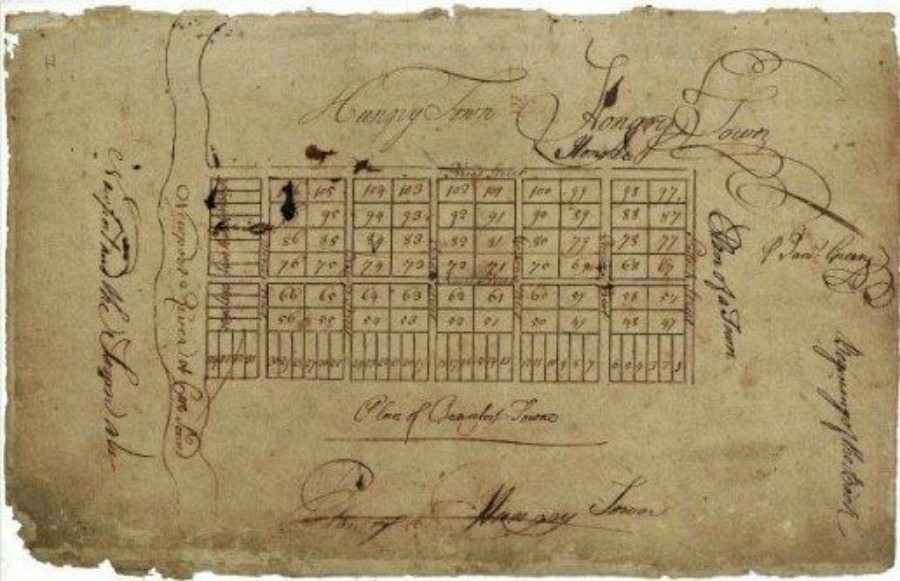Hungry Town: What’s in a name?

The words “Hungry Town” and “Hongry Town” were inscribed on the 1713 plat of Beaufort, NC. So, it was a natural to use “Hungry Town” as part of the name of our business.
Named in honor of Henry Somerset, Duke of Beaufort, the town was incorporated in 1723 and has been the seat of Carteret County ever since.
The plat is the only documentation that the newly laid-out town may have been casually called “Hungry Town.” The words, “Plan of Hungry Town” were crossed out at the bottom of the plat and replaced with “Plan of Beaufort Towne.”
Architectural historian Tony P. Wrenn, who did the 1970 study for Beaufort’s nomination to the National Register of Historic Places, had his theory concerning “Hungry Town.” Wrenn believes that surveyor Richard Graves spilled ink but continued to use the sheet as he practiced with his ink and quill. Graves’ “Hungry Town” and “Hongry Town” scribbles may have referred to the new town full of lots “hungry” for buyers, or to a few struggling settlers in the area.
Few documents exist from this time and it appears that very few people were living in Beaufort when Blackbeard arrived in 1718. In fact, there may have been fewer than dozen people at that time.
This plat from 1713 shows the layout of lots and streets. The street names are still in use today.
Street names reflect the early development of the town: Ann Street for Queen Anne; Craven Street for the Earl of Craven; Turner Street for Robert Turner, owner of the land that was surveyed for the town; Pollock Street for Gov. Thomas Pollock; and Orange Street for William, Prince of Orange, who became William III of England.
By the late 18th century, Beaufort was an active seaport inhabited by sailors, pirates, privateers, fishers, soldiers, and planters. While the town’s busy sea trade connected Beaufort with seaports thousands of miles away, its geography kept it isolated from the interior of the state. That is why Beaufort has retained much of the charm from back then.
Beaufort-by-the-sea, as the town is romantically called, has a captivating history that spans almost 300 years — from tales about the pirate Blackbeard to its use as a port in the 18th century for Spanish and French sailing ships.
By using “Hungry Town” as part of our business name, Hungry Town Tours is preserving the official beginning of the town of Beaufort to come.
Many changes have taken place since that time in Beaufort’s history over 300 years ago. Today, the name “Hungry Town” is a natural tie-in with Beaufort’s history and bountiful culinary offerings.
